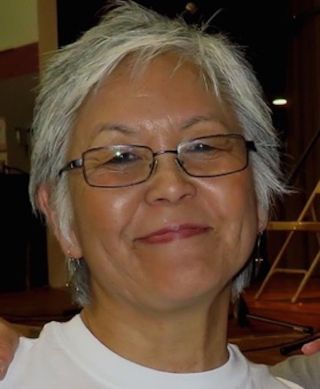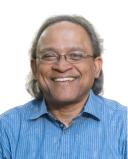Trauma
Dr. Satsuki Ina on Japanese American Trauma and Healing
From trauma and abusive power to restoring sense of self.
Updated October 16, 2023 Reviewed by Monica Vilhauer

This post is part one in a four-part series.
On July 25, 2020, the Japanese American activist organization Tsuru for Solidarity sponsored a community conversation on intergenerational trauma. A link to the full conversation is in the references. I’ve extracted psychologist Satsuki Ina’s remarks into a 25-minute edited video on YouTube, appended below. Dr. Ina discussed Japanese American trauma, but importantly, she addressed the COVID-19 pandemic as a collective trauma experienced by all global citizens as well. We’ve moved well past 2020, but the impacts of the pandemic are ongoing, and there are other collective traumas to be aware of. I think you’ll find Dr. Ina’s wisdom extremely helpful.
She addressed these topics:
The Trauma of Forced Relocation and Incarceration
During WWII, 120,000 Japanese Americans, two thirds of whom were young, U.S. born citizens, were forcibly removed from the West Coast in 1942 by President Roosevelt’s Executive Order 9066. They were moved through 15 assembly centers into 10 confinement sites, also known as incarceration, concentration, or imprisonment camps. 46 years later, President Reagan signed the Civil Rights Act of 1988, which finally apologized to Japanese Americans for the unjust removal and incarceration, and provided $20,000 to each living survivor. This was the result of activism and protest that started in the Japanese American community during the forced evacuation and which gained momentum in the 1960s and 70s leading to the founding of the redress and reparations movement and President Carter’s formation of the Commission on Wartime Relocation and Internment of Civilians (CWRIC). The CWRIC concluded that the internment was not a military necessity but instead resulted from “race prejudice, war hysteria, and a failure of political leadership.” (CWRIC, 1997, p. 18, quoted in Nagata et al, 2015.)
In the DSM, PTSD arises from a threat to one’s life or the witnessed threats to the lives of those whom one cares about. Doctors Satsuki Ina, Judith Herman, and others define trauma as a fundamental disruption of normal life and safety. Dr. Ina recognizes that not everyone affected by incarceration would meet criteria for PTSD, but all were impacted in some way. The traumas or disruptions experienced included being stripped of civil and human rights by one’s government, being subjected to aggressions upon removal and within camp, experiencing fears of what would come next, having family ties and communal belonging disrupted, being forced to live in barracks, not have privacy for dining, bathing, toileting, being punished, ostracized, shamed, or otherwise brutalized for speaking out against injustice, and many other indignities.
“Individual trauma shatters one’s assumptive world, sense of self, and well-being.” (Caruth, 1995, quoted in Nagata et al, 2015.) Cultural trauma “occurs when members of a collectivity feel they have been subjected to a traumatic event that leaves indelible marks upon their group consciousness, marking memories forever and changing their future identity.” (Alexander, 2004, quoted in Nagata et al, 2015.) Individual, race-based, cultural, historical, and intergenerational trauma can lead to significant and even overwhelming mental, emotional, relational, and physical health sequelae. (I will be writing more on intergenerational trauma, sense of self, healing, and the American culture’s relationship to abusive power in posts here over the next few weeks.)
The Trauma of the Aftermath of Incarceration
Dr. Ina points out that a major aspect of trauma is the internalization of the perpetrator’s narrative. In other words, survivors can blame themselves, or think that what was done to them was justifiable, creating shame, fear, alienation, and dissociation. In addition, trauma can turn some survivors against others, as the perpetrator’s narrative singled out targets within the population for even more persecution. For example, Japanese Americans deemed “defiant” and “disobedient” were put into Tule Lake segregation, which certainly met all the criteria of a prison camp. Dr. Ina was born in segregation. She says, with a survivor’s flair, that she was born “doing time.”
Ina also points out that the model minority myth forced a compliant stereotype onto Japanese Americans, who were otherwise also subjected to tropes of being “perpetual foreigners.” Oppressive forces aimed at Japanese Americans post-incarceration are part of the reason that Japanese Americans have “off-the-chart” out-marriage rates to whites. Ina implies that at least in part, out-marriage can be seen as an attempt to deal with the vulnerability exposed by incarceration and imprisonment.
Japanese Americans and Tsuru for Solidarity has used the consciousness and conscience of survivorship to advocate for the rights of children and families at the border, who have suffered monstrously under the U.S.’s failed and often cruel immigration policies.
Trauma Produces Emotional Distance, Avoidance, and Devaluation of Mental Health
Dr. Ina tells the story of a survivor who approached her before a community screening of her documentary, “Children of the Camps.” The elderly Japanese American man said “why are you bringing up the past? You shouldn’t be doing this!” She said, “well, let’s talk afterwards.” But instead of trying to talk to her afterwards, Dr. Ina saw him buying six copies of the film and trying to make his way out the back door. Ina rushed over to him and asked him if he still wanted to talk. She could see he’d been crying. He said, “that angry man in the film — that was me. That’s my story. I haven’t been able to talk about it with my children, so I bought copies of the film for them.”
Experiences of danger translate to feeling that it’s dangerous to even talk about the event. The abuser’s impact splits off and suppresses vulnerable parts of their victims and their descendants. Trauma is carried communally and intergenerationally, and even impacts those who care about people who were directly impacted and traumatized. Trauma interferes with our moral consciousness and senses of safety and justice in the world.
Healing Circles Help Heal Trauma
Dr. Ina’s incredible group work with survivors is showcased in “Children of the Camps.” (See references for links to watch this important film.) This work morphed into “healing circles,” based on the talking circles or hokocah in the Lakota language. Talking circles are present in many indigenous and global cultures. I’ve been a facilitator with Tsuru’s healing circles since 2020, and they have provided some of the most profound experiences of my career as a psychiatrist and community member. Suffering is a crisis in connection, and the opposite of suffering is belonging. Healing circles create what I call “islands of belonging in what can be a sea of disconnection and suffering.” These islands continue to generate ripples in my life and the lives of many other participants.
We live in a very politically polarized and disconnecting time, and there are abuses of power and rhetoric that threaten our well-being, safety, and survival as individuals, community members, and as a nation. I hope we can all find ways to connect, share distress, and find comfort and healing in community, rather than fall further into antagonism with one another.
Dr. Satsuki Ina: The Trauma of Japanese American Incarceration and Aftermath
(c) 2023 Ravi Chandra, M.D., D.F.A.P.A.
References
Full Tsuru conversation: Tsuru Rising: Community Conversation--Japanese American Identity & Intergenerational Trauma
Children of the Camps – on Amazon Prime and Kanopy
Chandra R. Dr. Satsuki Ina on Migrant Detention, Racism and COVID19. Pacific Heart blog on Psychology Today, April 6, 2020
Nagata DK, Kim JHJ, Nguyen TU. Processing Cultural Trauma: Intergenerational Effects of the Japanese American Incarceration. J Soc Issues, June 11, 2015.
You might also like:
Chandra R. What Do We Feel When We Feel Close? The Dim Sum Dialogues, Pacific Heart Blog on Psychology Today, September 19, 2023
Four-part series on Trauma and Healing:
Part 1: this post, Dr. Satsuki Ina on Japanese American Trauma and Healing (September 26, 2023)
Part 2: Cultivating Sense of Self to Cope With Trauma and Life (October 3, 2023)
Part 3: Creating Transitional Spaces to Heal Intergenerational Trauma (October 5, 2023))
Part 4: Abusive Power and Megalomania Perpetuate Trauma (October 15, 2023)




